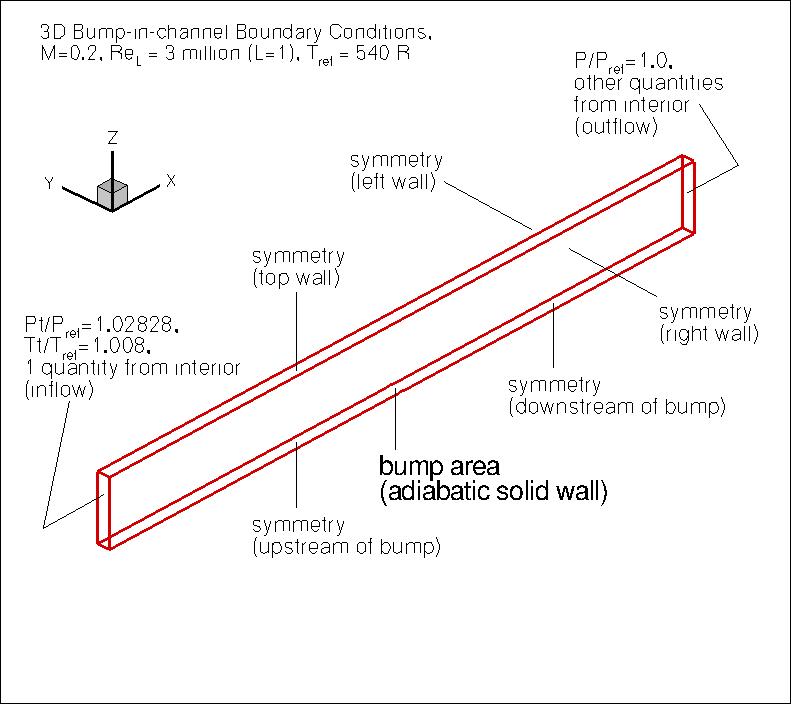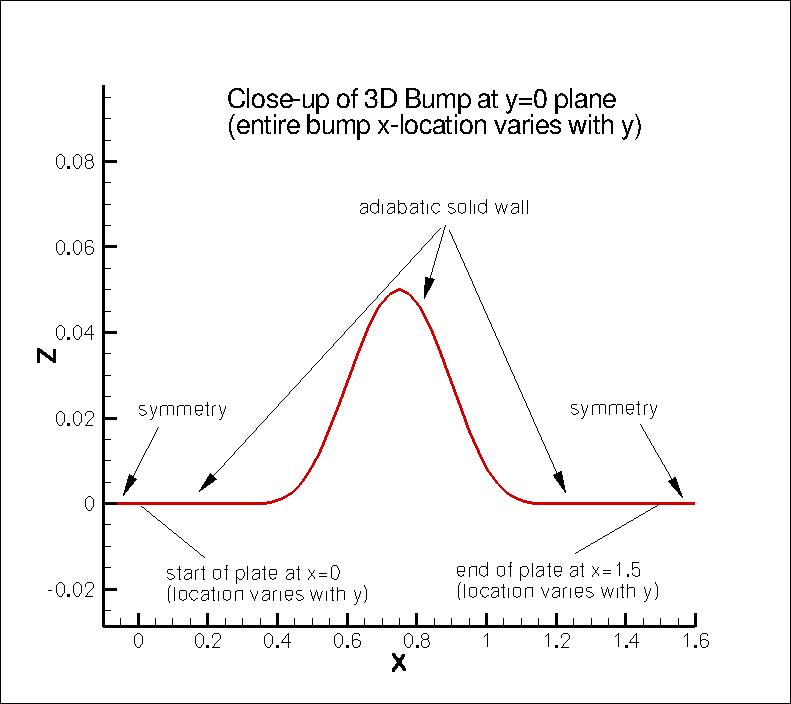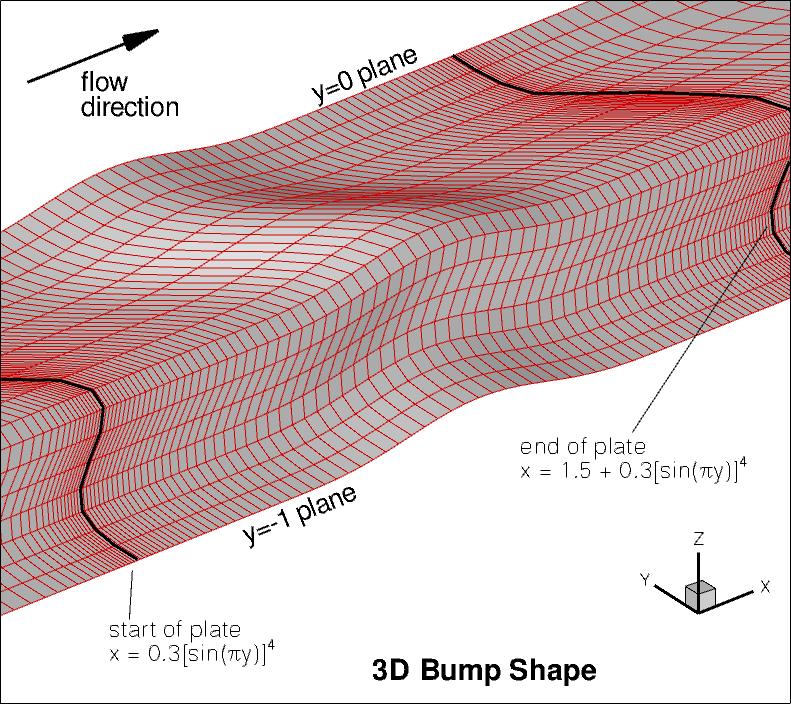 |
Langley Research CenterTurbulence Modeling Resource |
Return to: Turbulence Modeling Resource Home Page
VERIF/3DB: 3D Bump-in-channel Verification Case - Intro Page
The purpose here is to provide a large sequence of nested grids
of the same family,
along with results from existing CFD codes that employ specific forms of particular turbulence
models, in order to help programmers verify their implementations of these same models.
On a given grid, there may be differences between the results from different codes, but presumably
as the grid is refined the results should approach the same answer (if the flow conditions and
boundary conditions are the same).
With verification, the purpose is not to establish the "goodness" of a model compared to experiment,
but rather to establish that a model has been implemented correctly, as intended according to the
equations and boundary conditions. (It is through validation that a model's "goodness" is
established.) The purpose here is primarily verification.
The 3D bump-in-channel case is a three-dimensional version of the
2D bump-in-channel verification case,
with spanwise variation added.
In this 3D case the z direction is "up" and y is "spanwise."
It was run at
M = 0.2, at a Reynolds number of Re = 3 million based on
length "1" of the grid.
The body reference area is 1.5 units.
This lower wall is a curved
viscous-wall bump extending from x=0 to 1.5 at the two sides of the computational domain
y=0 and y=-1, but starting and ending further downstream at y locations
inbetween.
The maximum bump height is 0.05. The "2D" definition of the bump at the y=0 plane is:
But the x-location of any position on the bump varies in the spanwise direction
between y=0 and y=-1 according to:
where x0 is any given x-location of the "2D" shape at y=0, and
"pi"=3.1415927... The upstream and downstream farfield extends 25 units from
the viscous-wall, with symmetry plane BCs imposed on the lower wall between the farfield and the solid
wall. The upper boundary is a distance of z=5.0 high.
It is taken to be a symmetry plane.
The left and right walls are also taken to be symmetry planes.
The following plots show the layout of this case,
along with the boundary conditions.
(Note that particular variations of the BCs at the inflow, top wall, outflow,
and side walls may also work and yield similar results for this problem.)
Another important note: although M=0.2 is low enough that the flow is "essentially" incompressible,
this is a compressible flow verification case. Therefore, if you run this case with an incompressible
code, your results may be close - but not quite the same - as the grid is refined.
What to Expect:
(Other turbulence model results may be added in the future.)
Return to: Turbulence Modeling Resource Home Page
Recent significant updates: Responsible NASA Official:
Ethan Vogel z=0.05*(sin(pi*x/0.9-(pi/3.)))**4 for 0.3≤x≤1.2 along y=0
z=0 for 0≤x<0.3 and 1.2 <x ≤1.5
x=x0+0.3(sin(pi*y))**4 for -1≤y<0



RESULTS
LINK TO EQUATIONS
MRR Level
SA
SA eqns
4
SA-RC-QCR2000
SA-RC-QCR2000 eqns
3
SST-Vm
SST-Vm eqns
3
SSG/LRR-RSM-w2012
SSG/LRR-RSM-w2012 eqns
3
Wilcox2006-klim-m
Wilcox2006-klim-m eqns
2
08/28/2020 - changed SST-V naming to SST-Vm
02/25/2014 - added Wilcox2006 page
Page Curator:
Clark Pederson
Last Updated: 03/23/2021